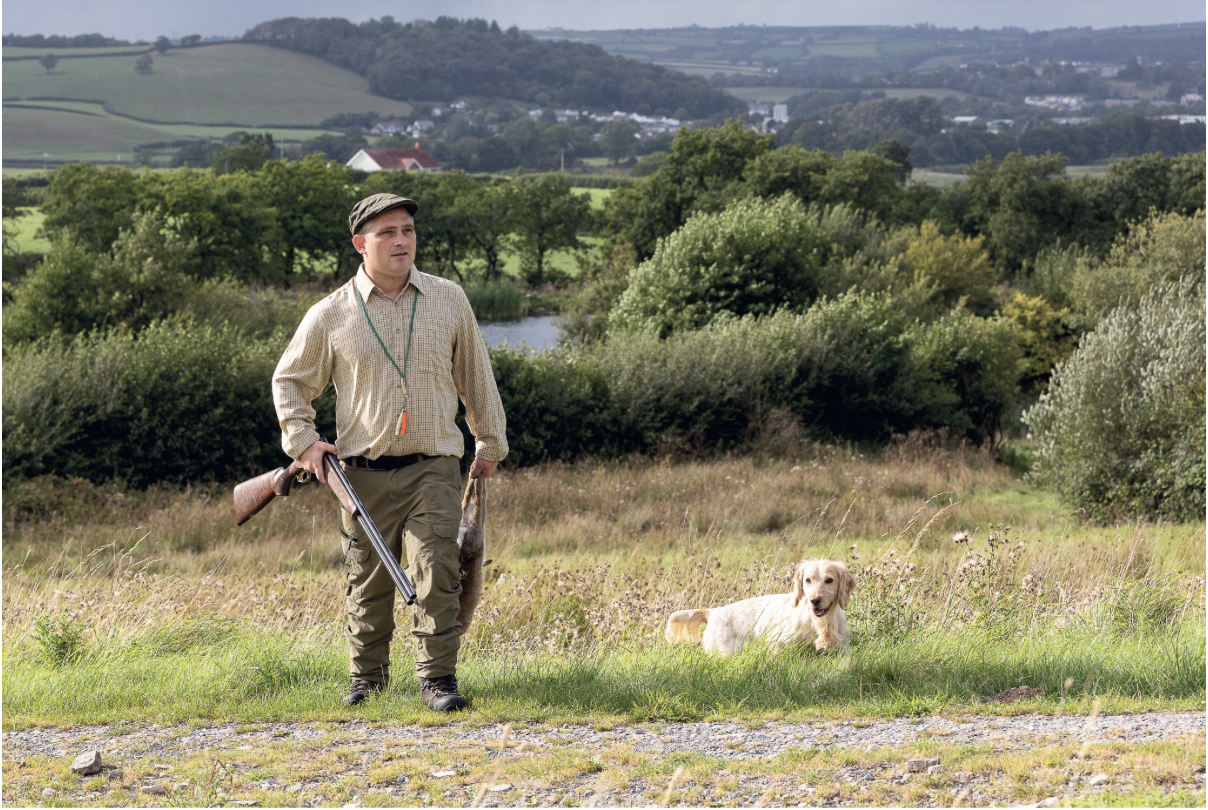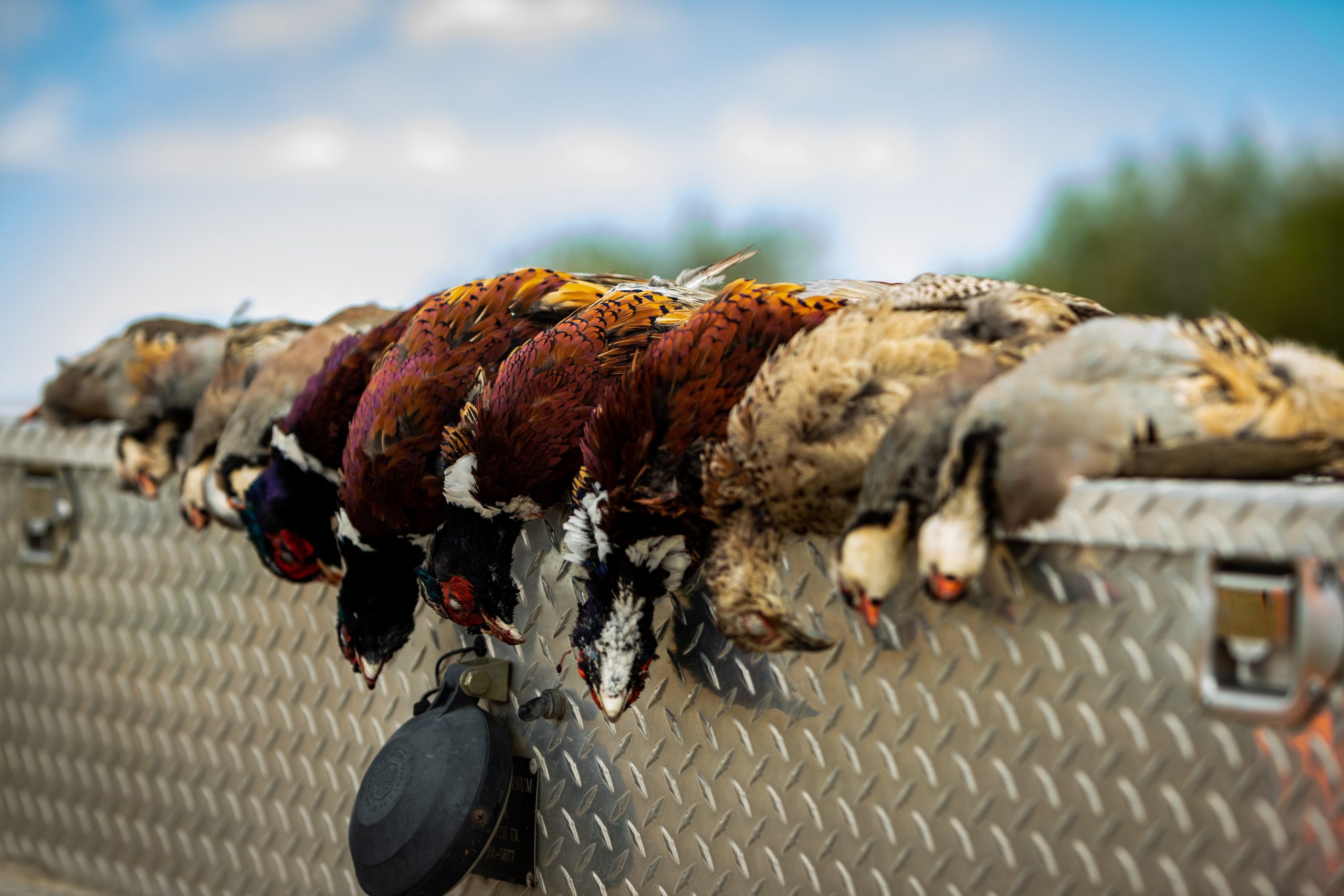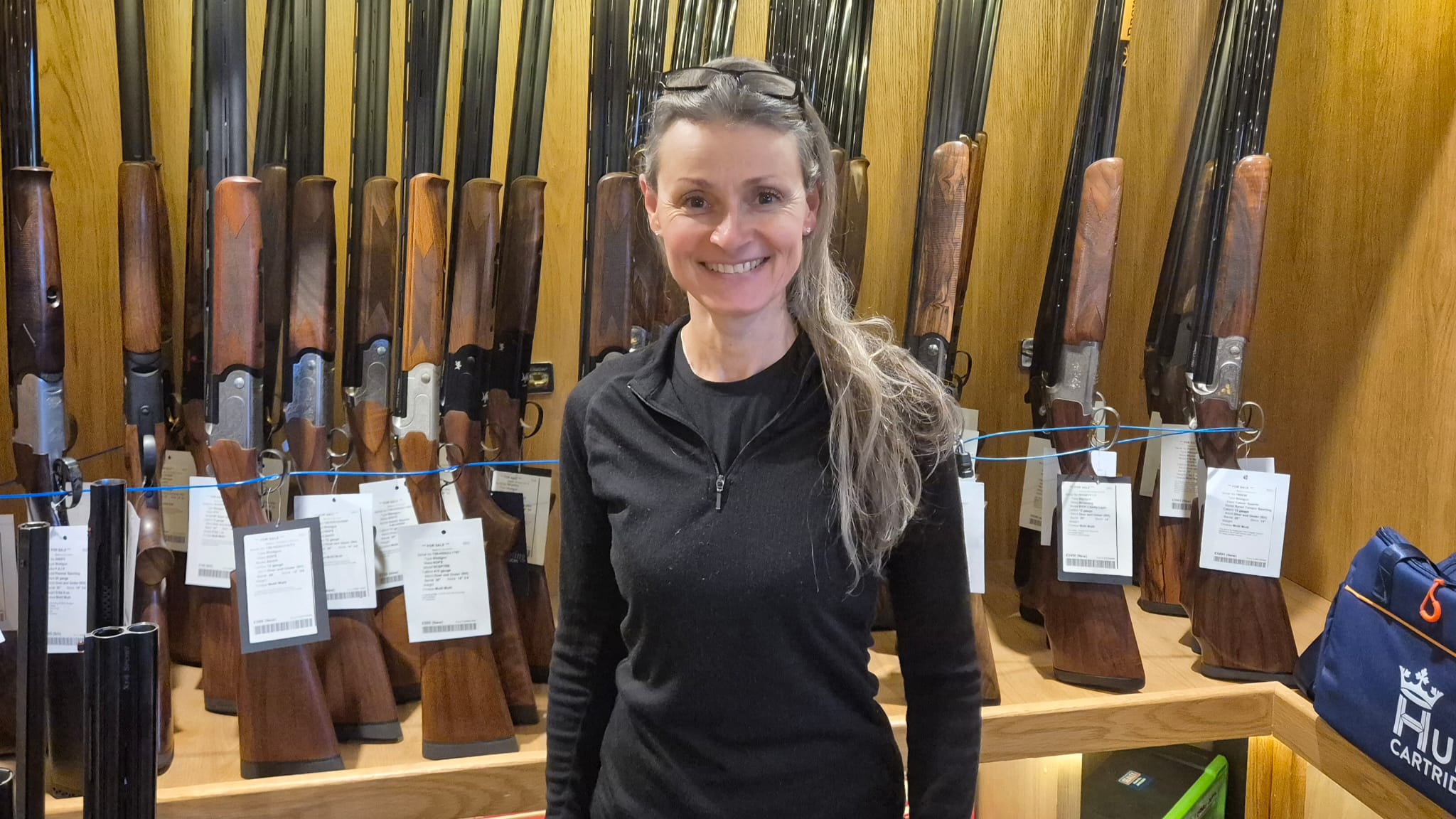Walked-up rabbits
Nick Ridley enjoys a therapeutic couple of hours rabbit shooting in Wales and is reminded of the importance of fieldcraft

Back in the day, it was normal to mooch about with a dog and gun, hoping to bag a rabbit flushed from the bottom of an old hedgerow or a pigeon startled from its roost in an ancient oak tree. Nowadays, this kind of shooting is almost a forgotten art. But nothing beats an early morning or late evening foray with dog and gun, trying to outwit a bunny or two for the pot.
Choosing and Training Your Dog
First, you need a steady dog. It’s no use if your canine companion chases at the first sight of a fleeing bunny. He needs to hunt close enough so you have a chance to take a safe shot. Of course, he must stop at the flush or, at the very least, respond to your well-trained stop whistle. You’ll need lightning reflexes to take a snap shot while in mid-step. And most importantly, you need a skill many guns today lack or have long forgotten—fieldcraft.
Thousands of years ago, humans hunted to survive and knew their quarry intimately. Today’s pigeon shooters and wildfowlers study flightlines and feeding patterns. They watch the wind direction to set up their decoys most effectively. In this way, they still practice fieldcraft.
A Visit to Jon’s Smallholding
I recently visited Jon, an old friend in Wales, who owns a 40-acre smallholding bordered on one side by a large lake. The place is set up perfectly for gundog training. He has three excellent rabbit pens, ideal for training hard-hunting spaniels to stay steady. But keeping rabbits in a training pen is challenging. Regular escapees dig, climb, or swim to take refuge in the hedges and banks around the farm.
Wales is not known for large numbers of wild rabbits. Many serious trainers head north to Englandshire to train their spaniels. But after a hard day’s work, a wander is less about shooting large numbers and more about relaxing and taking in the countryside. It feels fitting that Welsh poet WH Davies wrote in his poem Leisure: “What is this life if, full of care, we have no time to stand and stare.”
Jon’s son, James, joined us for a walk. Over tea, we discussed the best way to tackle the boundary hedgerows. Working a spaniel along a hedge this time of year can be tough, especially if you want a successful shot. The cover is thick, and the dog tends to pull ahead. If he flushes a rabbit, it usually bolts out of shot. The best strategy is to work with the wind coming into you, helping hold the dog back.
If the wind blows across the hedge, it’s better to work the downwind side. Going the opposite way means the dog will hunt on the far side where you can’t see it. The hedgerows on the smallholding are dense in places, so the gun walked well out from the cover to keep sight of the dog. This also helped reduce difficult shooting angles.
The small Welsh-bred cocker spaniels excel in dense cover. Their size and hard-hunting style mean any rabbit hiding in the blackthorn and hawthorn tangle will be flushed out quickly.
The Chase and The Shot
The weather had recently warmed after rain. Jon noticed a small run into a thick sedge clump by the lake. He suspected rabbits were using it for shelter. I was working my young cocker, Percy. He’s still a novice with rabbits but is fearless in heavy cover. As we hunted towards the sedge, his pace quickened—and so did my heart.
He punched into a small hole at one end. As he pushed through, a rabbit bolted from the other side. It reminded me of my ferreting days. I squeezed off a quick shot before the rabbit disappeared into some rushes, and I was pretty sure I had hit it hard.
Teamwork and Fieldcraft in Action
Percy stopped sharply, looking as though he had marked the rabbit well. I gave him a confident “Get out” command. Once clear, he followed a perfect line, hunting hard in the shot area. Suddenly, he headed straight for the lake and launched himself into the water.
I had no idea what he was doing until he emerged through some rushes, carrying a very dead and very wet rabbit. It was a brilliant retrieve. I assume the momentum of the rabbit and the force of the shot had propelled it into the lake edge.
This was a great start to our mooch. Though it was a casual session, it showed that fieldcraft, a steady dog, and a lucky shot still matter in shooting.
I pulled Percy into heel, and it was James’s turn to run one of his dogs. We moved to a thick hedge line, ideal rabbit cover despite being tough going. For this kind of shooting, speed isn’t key. Instead, you need a dog that’s methodical and inspects every likely patch of vegetation.
A rabbit sitting tight in a seat gives off little scent. If it feels safe, it sits as tight as a broody hen on eggs. James, an experienced rough shooter, had a dog that knew its job. Halfway along the hedge, it pushed out a rabbit.
Often, rabbits run along the hedge edge instead of bolting into the open, making safe shots tricky. This happened here. The rabbit outsmarted James, giving no chance for a shot. I always maintain that rabbit shooting over dogs with shotguns is one of the most dangerous forms of shooting. You must never take a risky shot.
Wrapping Up a Perfect Outing
We moved to another long hedge. James took one side, and I took the opposite. We couldn’t see each other, so we stayed in verbal contact. James hunted his dog while I kept Percy at heel. Near the hedge’s end, I heard a shot and called out to James. He had shot a rabbit that made the mistake of running into the open field. I walked around the headland just as the dog returned with the rabbit.
Two rabbits in the bag was enough. There’s an old saying: “You can only shoot them once.” It wasn’t in anyone’s interest to take more than we could carry home and cook. It had been a pleasant couple of hours, and the dogs performed well.
I always feel grateful to work my dogs in such beautiful places with good people. Special times like these help put life’s pressures into perspective.



